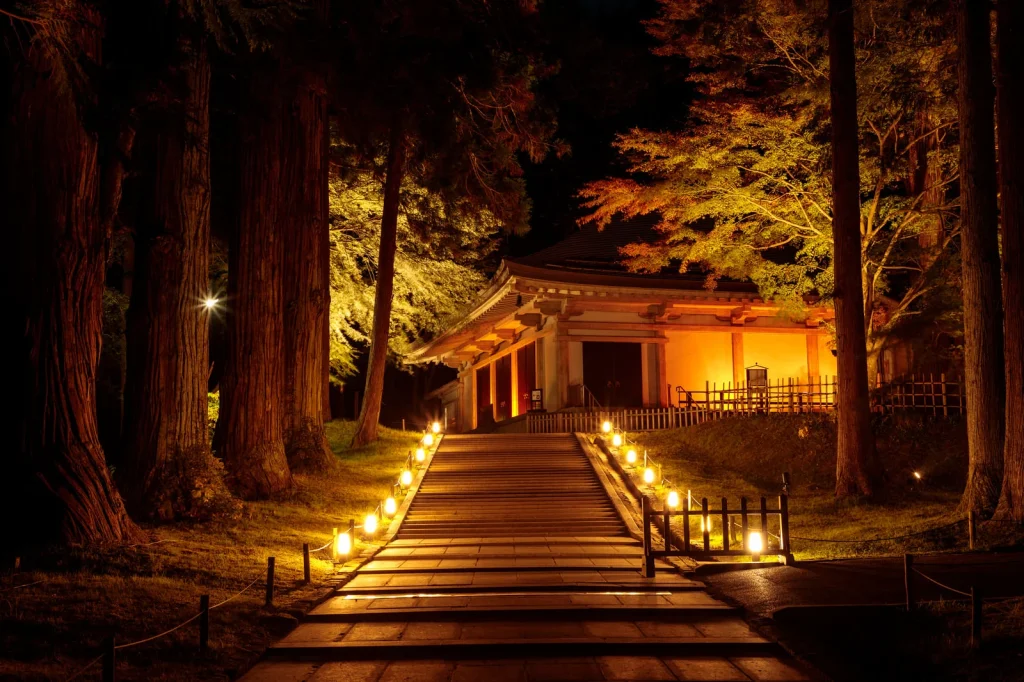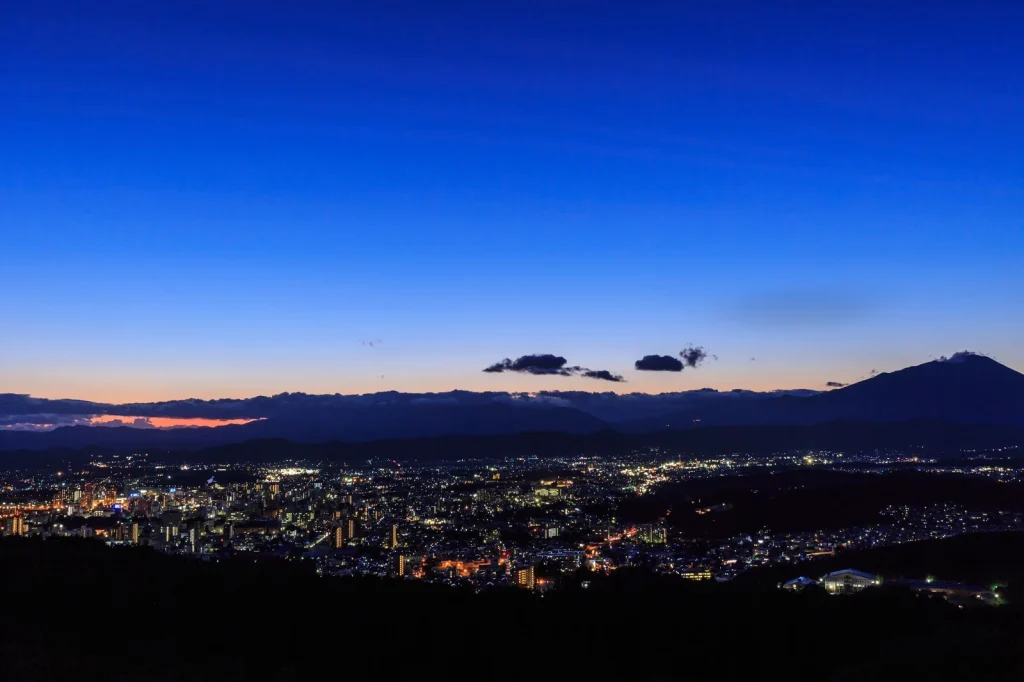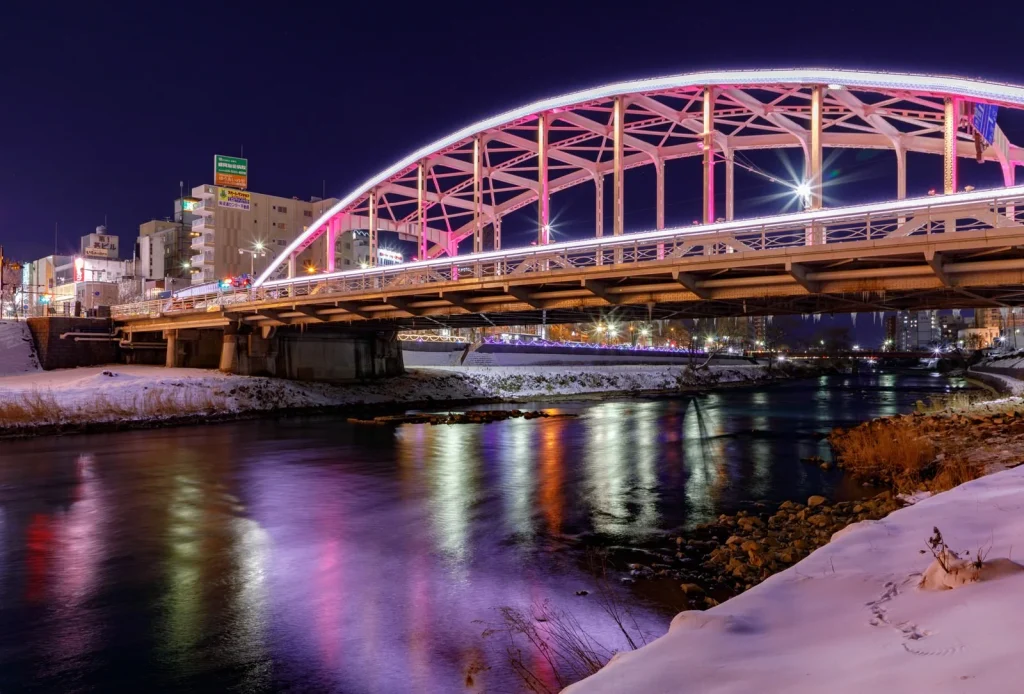Japan, a country celebrated for its harmonious blend of tradition and modernity, unveils one of its hidden gems in the heart of the Tohoku region – Morioka City.
Nestled in the scenic landscape of Iwate Prefecture, Morioka stands as a testament to the nation’s rich cultural heritage and its seamless integration with contemporary life.
In this exploration, we embark on a journey through Morioka’s storied past, vibrant present, and promising future, discovering the timeless beauty and cultural riches that define this captivating city.
A Glimpse into Morioka’s History

Morioka’s roots trace back centuries, weaving a narrative that reflects the resilience and spirit of its people.
The city’s historic charm is embodied in its well-preserved samurai district, where traditional residences known as “minka” transport visitors to an era of feudal Japan.
Strolling through these atmospheric streets, one can almost hear the echoes of bygone times, envisioning the lives of samurai warriors and the cultural tapestry that adorned Morioka.
Morioka’s Cultural Treasures
The Chūson-ji Konjiki-dō

Chūson-ji, a venerable Buddhist temple nestled in the scenic hills of Hiraizumi, Iwate Prefecture, Japan, is renowned for its cultural and historical significance.
At the heart of this temple complex lies the Konjiki-dō, a breathtaking structure also known as the “Golden Hall” due to its resplendent gold leaf exterior.
This architectural gem serves as a testament to the opulent aesthetic and religious devotion of the Fujiwara clan, the powerful family that played a pivotal role in the region’s history.
The Radiant Exterior:
The Konjiki-dō stands as an exquisite example of Heian period architecture, dating back to the late 12th century.
What immediately captivates visitors is the exterior adorned with gold leaf, creating an ethereal glow that has earned the hall its illustrious nickname.
The intricate details of the decorative elements showcase the meticulous craftsmanship of the artisans of that era.
Religious Significance:
Originally constructed to enshrine the remains of the Fujiwara leaders, including their founder, Kiyohira, the Konjiki-dō is a mausoleum and a place of worship.
Its sacred purpose is reflected in the intimate space within, where the central image is enshrined.
This image is flanked by statues of Buddhist deities, creating a serene ambiance conducive to contemplation and spiritual reverence.
The Fusion of Buddhism and Esoteric Shugendō:
The Konjiki-dō exemplifies the fusion of Pure Land Buddhism, emphasizing the aspiration for rebirth in a blissful realm, and esoteric Shugendō practices that incorporate asceticism and mountain worship.
This amalgamation of beliefs is indicative of the religious syncretism that characterized Japan’s medieval period.
Preservation Efforts:
Over the centuries, the Konjiki-dō has faced numerous challenges, including natural disasters and wars.
Remarkably, the structure has been reconstructed multiple times, with the current iteration being a result of meticulous preservation efforts that began in the 20th century.
The delicate process of restoration aimed to maintain the hall’s historical authenticity while ensuring its longevity for future generations.
Recognition by UNESCO:
In 2011, Chūson-ji, including the Konjiki-dō, received well-deserved recognition as a UNESCO World Heritage Site.
This acknowledgment highlights the global significance of Hiraizumi as a cultural and spiritual center, preserving the legacy of a bygone era.
Visiting the Konjiki-dō:
For those fortunate enough to visit Chūson-ji and the Konjiki-dō, the experience is nothing short of awe-inspiring.
As you approach the Golden Hall, the radiant exterior creates a moment of quiet reflection, transporting visitors to a time when the Fujiwara clan’s opulence and religious fervor left an indelible mark on Japan’s cultural landscape.
In essence, the Chūson-ji Konjiki-dō is more than an architectural marvel; it is a living testament to the intertwining threads of history, religion, and artistry.
Its golden facade invites visitors to delve into the rich tapestry of Japan’s past, where the aspirations of a powerful clan converged with the spiritual aspirations of a nation.
Iwate Park and Morioka Castle
A prominent symbol of Morioka’s history, Iwate Park surrounds the remnants of Morioka Castle, a structure that once stood as the seat of power for the Nanbu clan.
Cherry blossoms grace the park in spring, creating a picturesque backdrop for visitors. The castle’s stone walls and moats evoke a sense of medieval grandeur, offering a glimpse into Morioka’s feudal past.
Rock-Splitting Cherry Tree
Nature herself has bestowed Morioka with a unique spectacle – the “Rock-Splitting Cherry Tree” or “Ishiwarizakura.”
This centuries-old cherry tree, growing amidst massive granite stones, symbolizes tenacity and resilience. Each spring, it bursts into a profusion of blossoms, showcasing the beauty that can emerge even from the toughest of circumstances.
Culinary Delights: Morioka’s Gastronomic Wonders

Morioka’s culinary scene stands as a tantalizing fusion of traditional Japanese flavors and local specialties.
Wanko Soba, a beloved local dish, invites diners to savor buckwheat noodles in small, consecutive servings.
The lively and interactive dining experience reflects the warm hospitality for which Morioka is renowned.
The Tranquil Beauty of Ryusendo Cave
For those seeking a rendezvous with nature, Ryusendo Cave, one of Japan’s most extensive limestone caves, offers an otherworldly experience.
Crystal-clear underground lakes, captivating stalactite formations, and an ethereal atmosphere make this natural wonder a must-visit destination for explorers and nature enthusiasts alike.
Morioka’s Arts and Crafts Scene
Morioka Sansa Odori Festival
Celebrating the vibrant arts scene, Morioka hosts the Morioka Sansa Odori Festival annually in August. This lively event showcases traditional drumming, dance, and colorful processions, captivating both locals and visitors.
The rhythmic beats and spirited performances embody the city’s joie de vivre.
Nanbu Tekki Craftsmanship
Morioka takes pride in its heritage of Nanbu Tekki, traditional ironware crafted by skilled artisans.
The elegant and durable ironware, ranging from teapots to decorative pieces, reflects the precision and artistry that have been passed down through generations.
Morioka’s Modern Facets
Morioka seamlessly blends its historical charm with modern amenities, creating a city where tradition and innovation coexist harmoniously.
Shopping districts, contemporary museums, and a vibrant nightlife scene cater to a diverse range of interests.
Accessible Nature Retreats

Surrounded by picturesque landscapes, Morioka serves as a gateway to outdoor adventures. Mount Iwate, the highest peak in the Tohoku region, beckons hikers and nature lovers.
The changing seasons paint the mountains and valleys with hues of cherry blossoms, vibrant greens, and winter snow, offering a kaleidoscope of natural beauty.
Future Horizons: Morioka’s Vision
Morioka City’s vision for the future involves sustainable development, preservation of cultural heritage, and continued innovation.
Initiatives to promote tourism, environmental conservation, and community engagement reflect Morioka’s commitment to ensuring a bright and inclusive tomorrow.
Getting to Morioka
Morioka is accessible by Shinkansen (bullet train) from major cities like Tokyo and Sendai, making it a convenient destination for both domestic and international travelers.
Conclusion: Morioka’s Endless Charms
In the heart of Iwate Prefecture, Morioka City unfolds as a multifaceted jewel, inviting explorers to discover its historical treasures, culinary wonders, and natural splendors.
As the city embraces progress while safeguarding its cultural legacy, Morioka stands as a testament to the enduring spirit of Japan – where the past and present dance together in a timeless celebration of life.
Visit Morioka and immerse yourself in a city where every street tells a story, and every season paints a new masterpiece on the canvas of time.



コメント